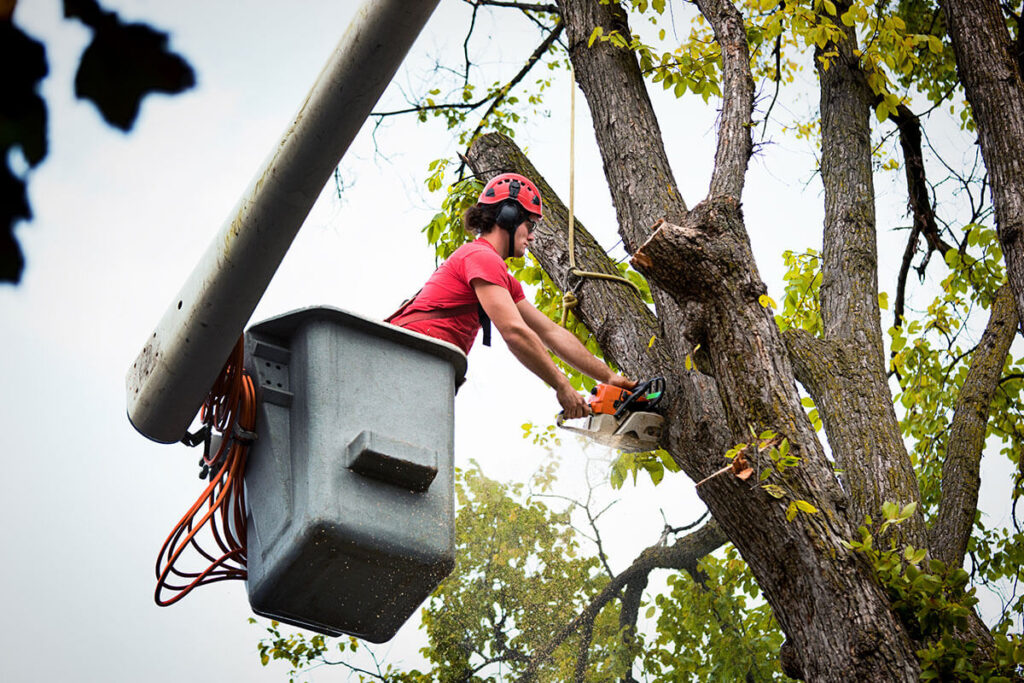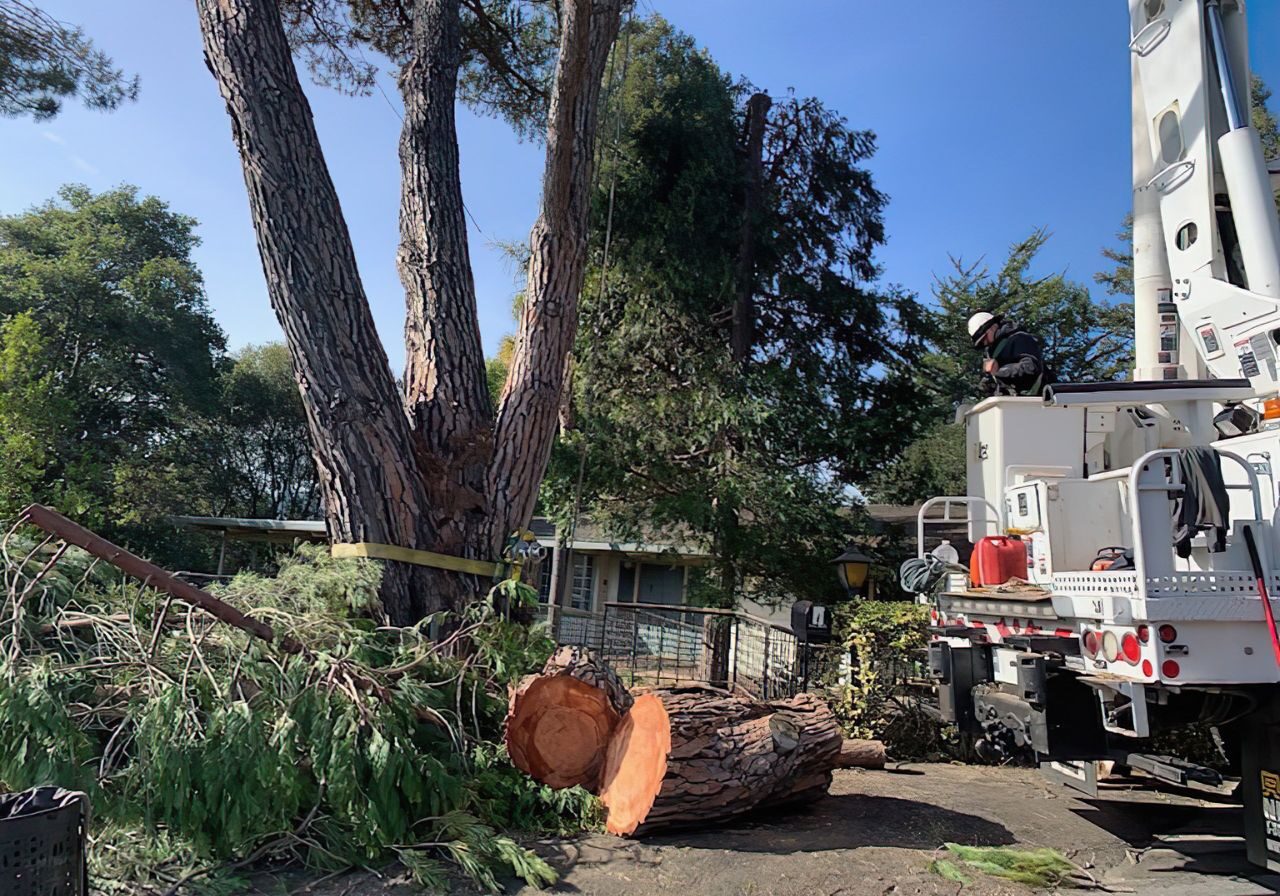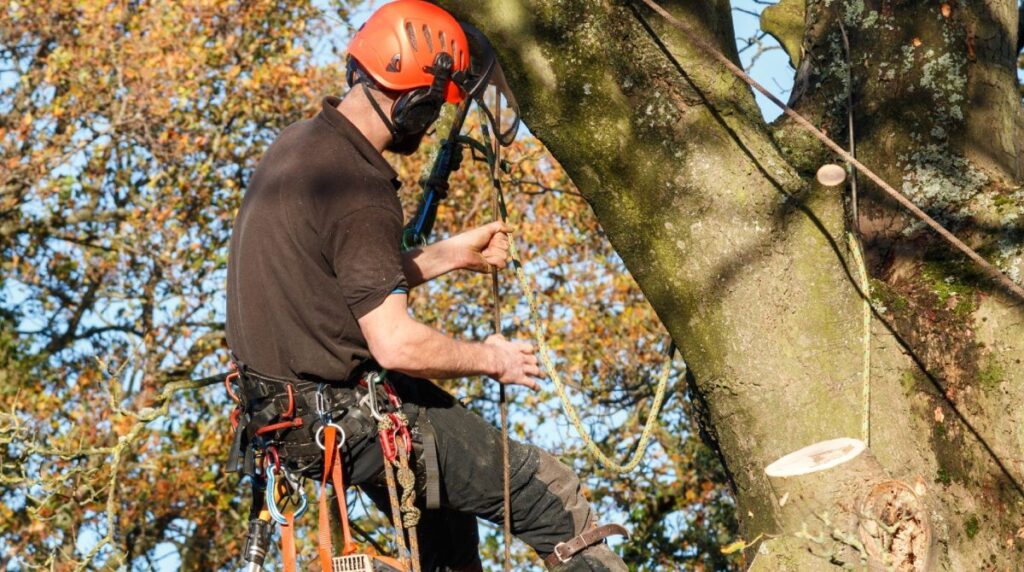Trees play a vital role in enhancing the beauty and value of any property. They provide shade, improve air quality, and create a calming ambiance. However, as trees grow, they may become a potential hazard to the property and its occupants. This is where tree lopping in Sydney becomes essential for property maintenance.
Understanding Tree Lopping and Its Importance
Tree lopping is a method of pruning trees that involves cutting off branches or sections of the tree. While it may sound aggressive, tree lopping Sydney is done for various reasons and has its own set of benefits.
Defining Tree Lopping
Tree lopping is a specialized technique that involves the removal of tree branches or sections to manage growth, improve tree health, and ensure safety. It is performed by trained professionals who have the expertise to understand the specific needs of each tree.
When done correctly, tree lopping can promote new growth, improve the overall appearance of the tree, and prevent potential hazards such as falling branches during storms. Additionally, tree lopping can help maintain the structural integrity of the tree, ensuring its longevity.
The Role of Tree Lopping in Property Maintenance
Tree lopping plays a crucial role in property maintenance by addressing several key aspects:
1. Enhancing Aesthetics: Tree lopping can help shape trees to enhance the visual appeal of a property. By removing overgrown or unsightly branches, the overall landscape can look more polished and well-maintained.
See Also: The Expertise of a Buyer’s Agent in Adelaide Real Estate
The Benefits of Regular Tree Lopping
Regular tree lopping has numerous benefits that contribute to the overall well-being of the property and its surroundings.
When it comes to maintaining the beauty and health of your trees, regular tree lopping plays a crucial role. Not only does it enhance the aesthetics of your property, but it also ensures the safety of your surroundings and promotes the longevity of your trees.
Enhancing Property Aesthetics
One of the primary benefits of tree lopping is the enhancement of property aesthetics. By maintaining the shape and size of trees, lopping helps create a visually appealing landscape that adds value to the property.
Imagine a well-manicured garden with perfectly shaped trees lining the driveway or framing the house. Tree lopping allows you to sculpt your trees to complement your property’s architecture and design, creating a harmonious and inviting outdoor space.
Ensuring Safety and Preventing Damage
Overgrown trees with weak branches pose a significant risk to the property and its occupants. Tree lopping helps eliminate these hazards by removing diseased, damaged, or dead branches that can fall anytime, especially during severe weather conditions.
By investing in regular tree lopping, you are proactively safeguarding your property against potential damage from falling branches. This preventive measure not only protects your home and belongings but also ensures the safety of your family and visitors.

Promoting Tree Health and Longevity
Regular tree lopping promotes tree health and longevity by removing diseased, infested, or decaying branches. This pruning technique also improves air circulation and sunlight penetration, enabling the tree to grow stronger and healthier.
Furthermore, tree lopping stimulates new growth and enhances the overall structure of the tree. By strategically pruning branches, you encourage the tree to allocate resources more efficiently, promoting robust growth and increasing its resistance to pests and diseases.
The Process of Tree Lopping in Sydney
Tree lopping in Sydney is a meticulous process that requires expertise and precision to ensure the health and safety of the trees involved.
When it comes to tree lopping, each step is crucial in maintaining the tree’s well-being and promoting its growth in the long run.
Initial Assessment and Planning
Before any tree lopping activity takes place, a certified arborist conducts a thorough assessment of the tree. This assessment includes evaluating the tree’s overall health, identifying any diseased or damaged branches, and assessing its proximity to buildings or power lines.
Furthermore, the arborist carefully plans the lopping process to ensure that the tree maintains its structural integrity and aesthetics post-pruning.
Execution of Tree Lopping
During the tree lopping process, the arborist utilizes specialized tools to make precise cuts on the identified branches. These cuts are strategically made to promote healthy regrowth and minimize stress on the tree.
Additionally, the arborist takes into consideration factors such as the tree’s natural growth patterns and potential impact on surrounding vegetation to execute the lopping process effectively.
Post-lopping Care and Maintenance
After the lopping is completed, ongoing care is essential to support the tree’s recovery. This includes providing adequate water, nutrients, and monitoring for any signs of stress or disease.
Regular inspections by the arborist can help identify any issues early on and address them promptly to ensure the tree’s continued health and vitality.

Choosing the Right Tree Lopping Service in Sydney
Choosing the right tree lopping service in Sydney is essential to ensure professional and reliable tree care. Trees are not only valuable for the environment but also add aesthetic appeal to your property. Therefore, entrusting their care to a reputable and experienced tree lopping service is crucial for their health and longevity.
When selecting a tree lopping service, it’s beneficial to delve deeper into their background and expertise. Look for a company that has a proven track record of handling various tree species and sizes with care and precision. Additionally, inquire about their certifications and training to ensure they adhere to industry standards and best practices. Visit https://www.westernsydney.edu.au/hie/stories/bushfire_science_partnership2 to get more about various species of trees.
Factors to Consider When Hiring a Tree Lopping Service
When hiring a tree lopping service, consider factors such as their experience, qualifications, equipment, and reputation. It’s important to select a service that values tree preservation, follows industry standards, and prioritizes safety. A reputable tree lopping service will assess the health of your trees before recommending any lopping or removal, ensuring that the best course of action is taken for the tree’s well-being.
Furthermore, a reliable tree lopping service will have the necessary equipment and tools to carry out the job efficiently and safely. From pruning shears to chainsaws, the right equipment is vital for the success of the tree lopping process and the safety of the workers involved.
Understanding the Cost of Tree Lopping Services
The cost of tree lopping services in Sydney varies depending on several factors, including the size of the tree, the complexity of the job, and the expertise required. It is advisable to obtain quotes from multiple service providers and compare their offerings before making a decision. While cost is an important consideration, it should not be the sole determining factor. Quality of service, experience, and reputation should also weigh heavily in your decision-making process to ensure the best care for your trees.
Legal Considerations for Tree Lopping in Sydney
Tree lopping in Sydney is subject to legal regulations that aim to protect the urban tree canopy and preserve the environment. As a bustling metropolis, Sydney values its green spaces and trees for their aesthetic, environmental, and health benefits. Therefore, it is crucial for property owners to be aware of the legal considerations surrounding tree lopping to ensure the proper care and maintenance of trees in the city.
Understanding Sydney’s Tree Preservation Order
Sydney’s Tree Preservation Order (TPO) is a set of guidelines that aim to preserve trees in the city. It outlines the procedures and permissions required for any tree-related activities, including tree lopping. The TPO designates certain trees as protected, requiring special considerations and permissions for any work to be done on them. These regulations are in place to safeguard the city’s tree canopy and maintain the ecological balance within urban areas.
Necessary Permits and Approvals for Tree Lopping
Depending on the tree’s location and significance, tree lopping may require permits or approvals from the local council. Property owners must obtain the necessary permissions before engaging in any tree lopping activities to avoid fines and legal repercussions. The process of obtaining permits may involve submitting detailed plans of the proposed tree lopping, demonstrating the need for the work and outlining measures to mitigate any potential negative impacts on the tree and its surroundings.
It is essential for property owners to engage with qualified arborists and tree care professionals who understand the legal requirements and have experience working within the framework of Sydney’s tree preservation regulations. By following the proper procedures and obtaining the required permits, property owners can ensure that their tree lopping activities are conducted responsibly and in compliance with the law.
More to read: Expert Stump Grinding Services for a Clean Yard




